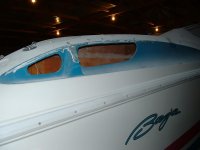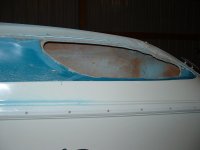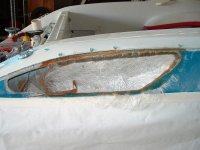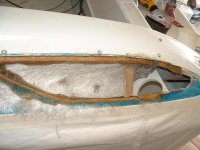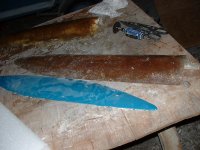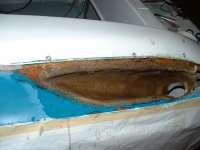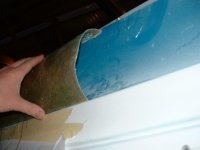jeffswav
New member
Ok, this project turned much bigger than anticipated. So I started a new thread to keep the transom project separate. Here are a couple of pics so far, I will show the mistakes as well as the good parts.
First I cut out the opening bigger to get more air in. I first tried to use a 1808 biax in the opening to bring the air to a 4" opening. I wet out the entire piece but it was to heavy and would not hold in place. Next I used a peice of mat and attached it around the corners. However on the next step the mat fell apart and I had to start over. I made some cardboard templates to the shape of the vent/scoop I applied resin to one side and let it dry. I then appled 4 layers of mat and let it dry. The cardboard did not hold its shape and the vent will be trashed.
Ok, I have regrouped and the second attempt will be with 1208 on the inside. I will tack it around the edge first then wet out the inside after fully cured. I purchaced some floral foam and I am going to make a plug for the vent/scoop with that. The new glass will not be here till next week from uscomp.
First I cut out the opening bigger to get more air in. I first tried to use a 1808 biax in the opening to bring the air to a 4" opening. I wet out the entire piece but it was to heavy and would not hold in place. Next I used a peice of mat and attached it around the corners. However on the next step the mat fell apart and I had to start over. I made some cardboard templates to the shape of the vent/scoop I applied resin to one side and let it dry. I then appled 4 layers of mat and let it dry. The cardboard did not hold its shape and the vent will be trashed.
Ok, I have regrouped and the second attempt will be with 1208 on the inside. I will tack it around the edge first then wet out the inside after fully cured. I purchaced some floral foam and I am going to make a plug for the vent/scoop with that. The new glass will not be here till next week from uscomp.

